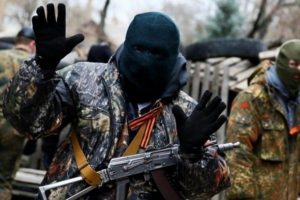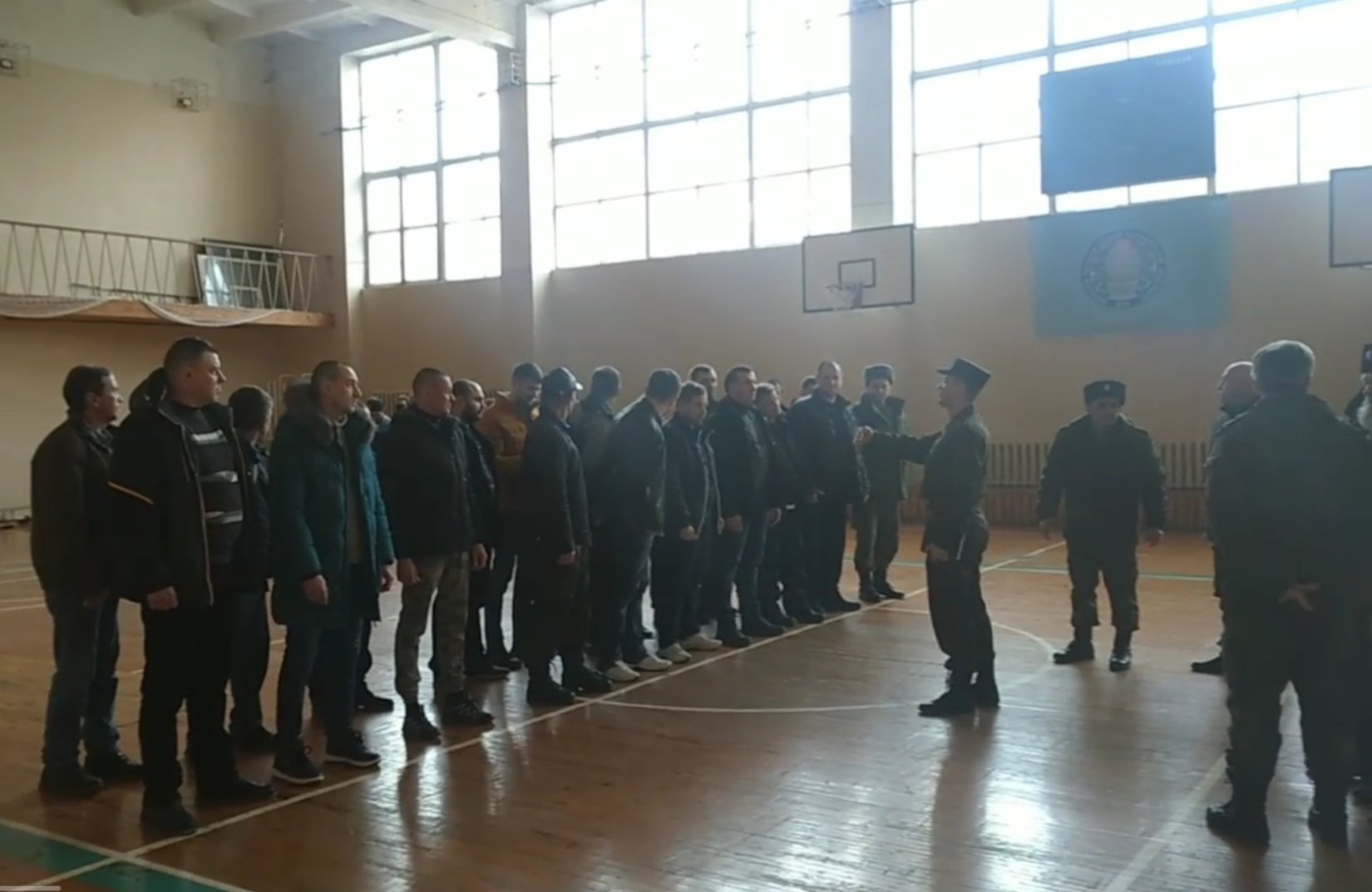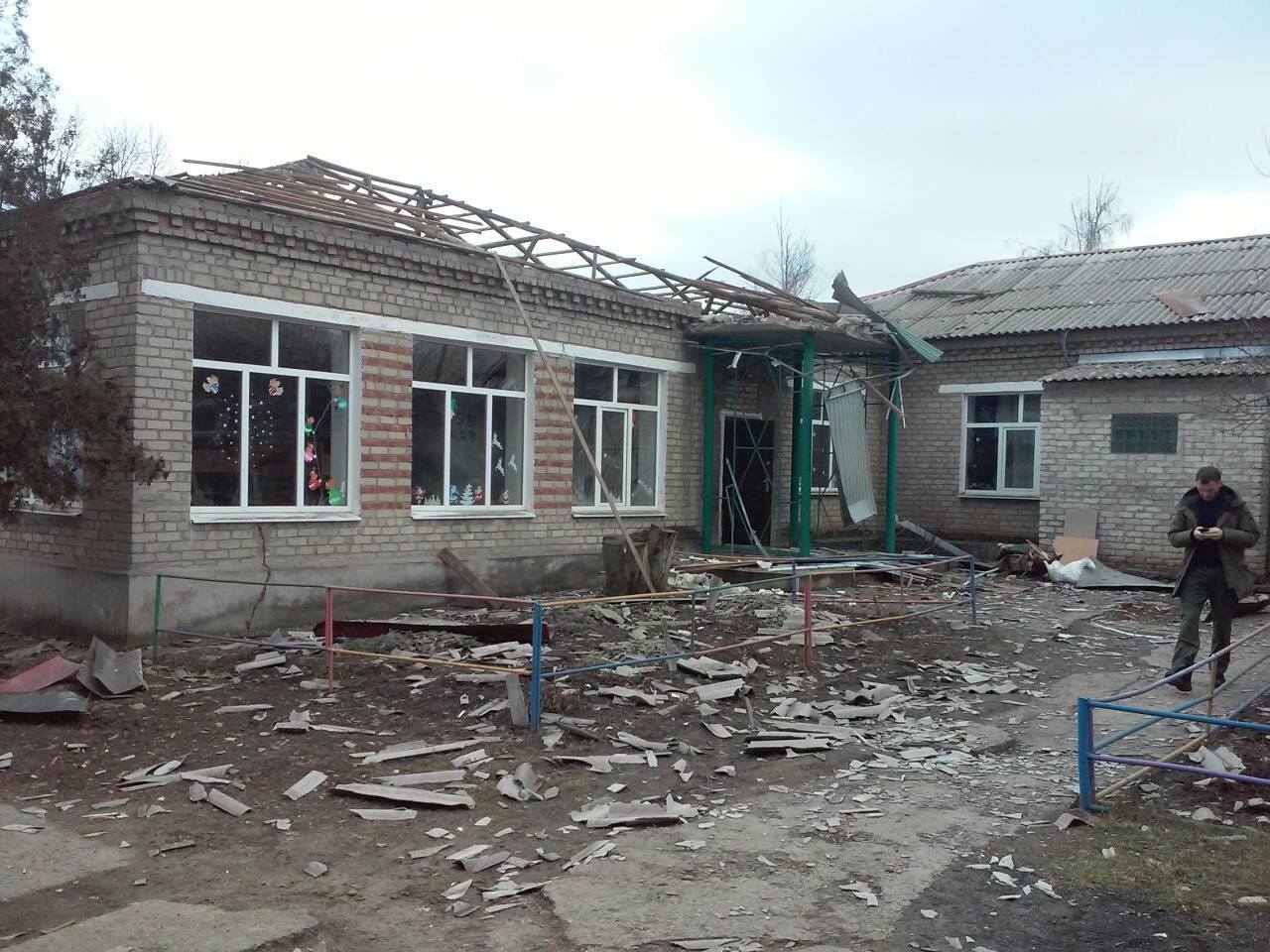For its part, the Ukrainian Ministry of Foreign Affairs stated its willingness to model the establishment of these patrols on the example of resolving an armed conflict as set by Croatia. Minister Prystaiko announced the following:
“We have decided to follow the experience of others, such as Croatia, so that there may be a guarantee of safety in this region, with the goal of conducting elections.”
It is worth noting that the idea of joint patrols has been discussed since the beginning of the Minsk process, during the presidency of Petro Poroshenko. For example, on June 19, 2014 during a meeting with graduates of the National Defence Academy, Poroshenko mentioned the following:
“I can say that the period of time required for the cessation of fire will be quite short. We expect that immediately following a ceasefire the disarming of illegal military formations will already begin, and the return to order and peace, including joint patrols for the purpose of fighting criminal activity, restraining bandits who are destabilizing the situation in the east.”
With regards to the specific idea suggested by President Zelenskyy, it has absolutely nothing in common with the type of joint patrols that were successfully undertaken in Croatia to end that conflict.
The Croatian experience
Here is some history: On November 12, 1995, the Erdut Peace Agreement was signed, It consisted of 11 points, very similar to the Ukrainian-Russian Minsk protocol. The Erdut Agreement called for a two-year period during which a transitional government would operate in the temporarily occupied territories of Croatia. The territory would be de-militarized under the supervision of joint patrols. The organization of local elections would be the responsibility of that same temporary administration.
The classical understanding of an international temporary administration means the formation of a government with a guaranteed legitimacy over the period of time of its existence in that territory, because no other legitimate government structures are functioning. All sides of the conflict agree to the establishment of this administration, and then it is ratified by the Security Council of the United Nations according to the procedure of its own UN statutes, presenting a resolution as required by Chapter VII and its power to maintain peace and "determine the existence of any threat to the peace, breach of the peace, or act of aggression”.
Further, transitional police forces began their joint patrols six months later. First, they needed to be trained, and did so in Hungary. Only then were candidates for this formation selected. The fundamental principle was the exclusion from these patrols of individuals who had taken part in the armed conflict on behalf of one side or the other. During their training, Croatia screened out 600 Serbian candidates. Later, 400 of those would be granted amnesty, but 200 were not granted amnesty due to this fact that they were accused of war crimes. And here is an essential lesson of the Croatian experience for Ukraine: not all individuals who were part of armed formations qualify for amnesty.
In other words, as applied to Zelenskyy’s idea of joint patrols of the temporarily occupied sections of the Ukrainian-Russian border, we should learn from the Croatian experience, identify those from the ranks of the illegal armed formations and investigate their crimes during the war years. Further, only after six months should patrols initiate their work along the border.
There is one further point. Joint patrols were only one aspect of the Croatian scenario of stability for the purpose of guaranteeing proper local elections. In addition to these patrols was the establishment of a temporary administration, as well as the demilitarization of those temporarily occupied territories, specifically, the disarmament of illegal military formations. All these aspects occurred simultaneously in Croatia.
By contrast, Volodymyr Zelenskyy proposes that in the territory which is not under the control of Ukraine, there should be joint patrols along the problematic section of the Ukrainian-Russian border even though currently there are 40,000 terrorist fighters in the military formations known as the 1st and 2nd army corps. These patrols would need to take place with an entire armed Russian-terrorist army watching them.
Also, during the diffusing of the Croatian conflict, the joint patrols were lightly armed, basically with pistols. Their legal jurisdiction included criminal activity, and if violence erupted in the course of their patrols, they were to call for support from the main apparatus of the Croatian Ministry of Internal Affairs. That begs the question: who do we call in the event of an armed incident along the Ukrainian-Russian border? The Armed Forces of Ukraine? Or the terrorist army corps?
Third, Zelenskyy’s idea for a joint administration and joint patrols has as its goal preparations for local elections in these separate raions of Donetsk and Luhansk Oblasts.
Here is another aspect where it is not possible to compare the situation in Croatia. In fact, in Croatia, elections were not held until two years after the demilitarization, the disarming of all illegal formations, the joint patrols of the border, the establishment of a transitional government as well as a transitional police force. Our leadership is suggesting Ukraine should first hand over the control of the Ukrainian-Russian border to joint patrols, and as early as October, conduct local elections. What they are proposing is nonsense. Practically speaking, there is no guarantee for fundamental aspects of safety for the participants of an election process when all they have for protection are the joint patrols.
In the regulation of the conflict in Croatia, elections were preceded by demilitarization, de-occupation and the establishment of essential structures for the functioning of a Croatian government in the temporarily occupied territories. In President Zelenskyy’s proposal, all political and safety mechanisms are discarded, including the caution of demilitarization and disarmament, in order to head directly to conducting elections.
Zelenskyy's plan?
Why would Zelenskyy propose such a questionable plan? There could be many reasons. First, it is possible that Volodymyr Zelenskyy wants to prove that Ukraine has its own so-called “road map” for regulating the situation. According to this logic, Ukraine would shore up its image as a subject of international politics. It could be Zelenskyy’s intention to increase the profile of the country, but he is doing so like an amateur, not a professional.
Second, it would be unwise to dismiss the possibility of “Russian hands” at work here, since the very idea of joint patrols would be impossible without the direct involvement of the illegal armed formations, precisely what the Russian Federation wants.

Coincidentally, an article was published in American mass media by a Russian journalist on the topic of Moscow’s willingness to accept a temporary international administration of Donbas. The impression was given that Russia was suggesting a proposal worthy of discussion for how developments could unfold. However, Crimea was to be excluded from this formula. In the article, written by a former chief editor of the television channel Dozhd, reference was made to the willingness of Russia to reach an agreement on the Donbas in exchange for Crimea. A fundamental signal was being sent to the West, expecting their acquiescence. In sequence, first there would be a resolution to the situation in eastern Ukraine, and then concerning Crimea.
For Ukraine, the main hidden dangers of Zelenskyy’s proposition concerns the fact that on the one hand he is stating that he will never negotiate with the self-proclaimed republics, but on the other hand he is launching the idea of having joint patrols. His position is self-contradictory.
It would be impossible to organize and carry out joint patrols: a) without agreement on a list of names and verification of individuals implicated in military crimes: b) without training these individuals militarily and preparing them psychologically, and having practical evidence that they have grasped their training. Such work is predicated on direct contact with Luhansk and Donetsk, again something Moscow favours. The ugly truth is that the proposed solution to governance in the Donbas is really a Moscow scenario, dressed up to seem more palpable.
Such a version of joint patrols of the border is not foreseen in the Minsk protocol, although the topic is addressed in the law, “On the special order of local self-government in the separate raions of Donetsk and Luhansk Oblasts”. It is well defined that elections in the temporarily occupied territories will take place only after control has been returned to the Armed Forces of Ukraine, in other words to Kyiv. The law excludes any reference to joint patrols. Zelenskyy is attempting, in that fashionable phrase, “to juggle facts to fit his fantasy”, namely, to exit the Minsk protocol while defending truly national interest. Let me repeat: the idea to conduct joint patrols in preparation for local elections is not included in binding Ukrainian law or in the Minsk protocol.
And one more point: the Croatian experience of joint police patrols was predicated on an international military contingent numbering 5,000 people. There is no reference to such a force for the ORDLO. If mention is to be made of the experience in Croatia, don’t forget to mention the involvement of an international military presence in the temporarily occupied lands, and their role in guaranteeing all these aspects: that elections be conducted, that the joint patrols actually occur, and that general security be maintained. Only then did the political component follow. Otherwise, everything gets disrupted, the protocol for joint patrols and the overall context.
The Ukrainian Ministry of Foreign Affairs, together with Minister Vadym Prystaiko, remarked that the war in Croatia was ended because of the Croatian plan. They have taken one point out of context and have ignored everything else. They are acting very unprofessionally.
Another crucial question: how many officers will there be in these joint patrols? In Croatia, initially there were nearly 1,300 Serbians compared with 200 Croatians, in addition to representatives of the temporary administration who were in the ranks of the peacekeepers. There is no idea yet on the composition of these patrols for the Ukrainian-Russian border, or what percentage from each side, who will qualify and who will be the representative third party.
Another important topic is that of contraband. In Croatia, the joint border patrols quelled the problem of illegal trade in goods, contraband, especially cigarettes. Currently Ukraine has no control over the contact line or over the Ukrainian-Russian border where it meets the Ukrainian territory currently in ORDLO. Only just recently was it reported that contraband cigarettes were seized, having a value of 20 million hryvnia. What good will joint patrols be along the border with Russia if they do not carry out their duties?
Kyiv has the obligation to guarantee the safety of the territories under its control. In other words, to gain control over the contraband that is now moving across the border with the temporarily occupied territories, illegal trade in vehicles, cigarettes, alcohol, and counterfeit gold.
The proposed scenario will be even more impossible to implement for the very reason that Russia categorically refuses to allow access to the Ukrainian-Russian border by the United Nations and other international organizations. Putin has already made it known at the Valdai Forum that the Russian side does not plan on handing over control to Ukraine of the border in question. However, at the same time, the press secretary for the president of Russia, Dmitry Peskov, commented on Zelenskyy’s idea by saying that Kyiv must negotiate the joint patrols with the “DNR/LNR” formations.
What is really being suggested, then, is not a Croatian version for the regulation of the situation in Eastern Ukraine, but in fact a Russian scenario. And the Kremlin is still insisting that Russia bears no responsibility for the military aggression against Ukraine.
For its part, Ukraine must demand certain red lines, backing up their insistence with evidence from international experience. To date, Ukraine has agreed to the monitoring of an international administration under the auspices of the OSCE… and under their protection, except for the fact that this is exactly what Russia has been insisting on. Russia must be banished from these representations, and Ukraine has the declarations of its own senior representatives to use against it.




